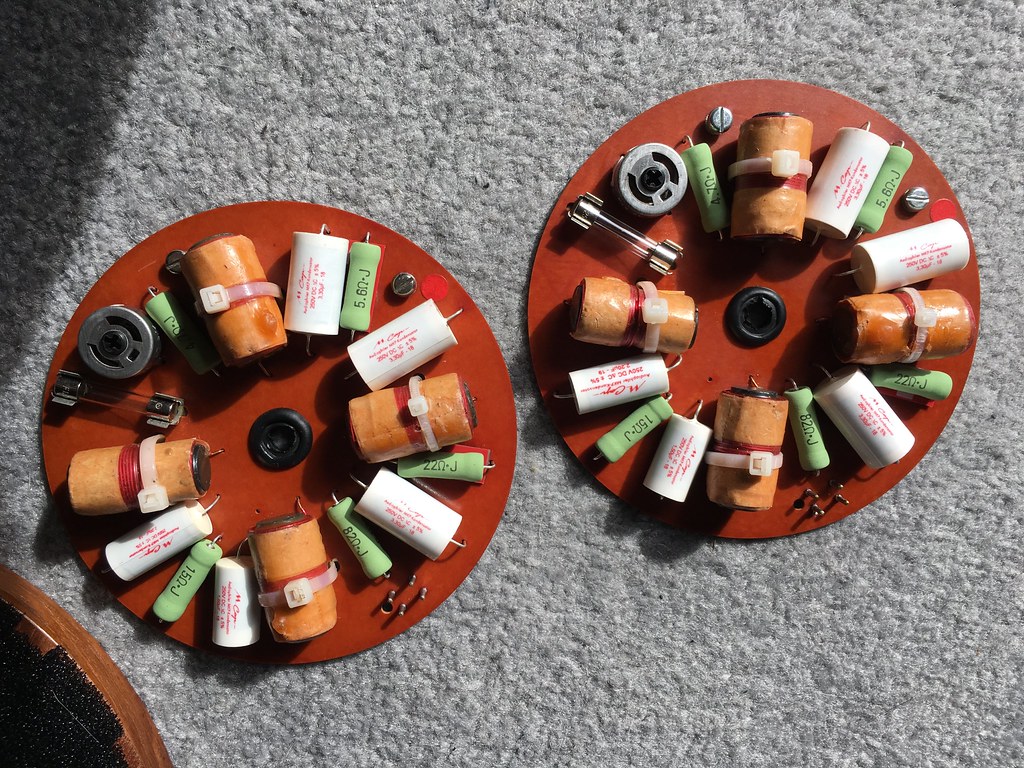Ok, weak-willed as I am I did exactly what I said I’d not do for a while and stuck the original crossovers back in. I just needed to cross-reference for my own sanity...
Everything I felt above is absolutely right aside from the degree and balance. The differences are bloody huge! First thing is the bass, it is just miles better with the original electrolytics, way deeper, warmer and more powerful, they just sound like a much bigger and better speaker. As such I now question my ability to make a proper judgement on the treble as by effectively ‘turning down’ the bass (and to a surprisingly large degree!) it will inevitably have drawn attention to the treble and upper mid, which certainly did sound more 3d and detailed, but also thinner.
I’m listening to the original crossovers now and wanting for nothing, so the next decision is whether to try the two 3.3uF Mundorf caps on the tweeter. I suspect I will try that, but maybe not immediately. I want to just get used to how the speakers were again first as they sound so coherent and together. I also want to see how easy it is to desolder the far nicer looking pots on the ‘new’ crossovers as ideally I want to make one ‘perfect’ pair out of the two sets. I’ll have a go at that later...
The problem with this is I am fairly convinced by component burn-in and I have only given the new caps about four hours, whereas the other pair of crossovers have had many hundreds. Even so the bass weight thing I’m hearing is too big for that, surely? Component burn-in is usually just a slight relaxing, not a huge thing.


